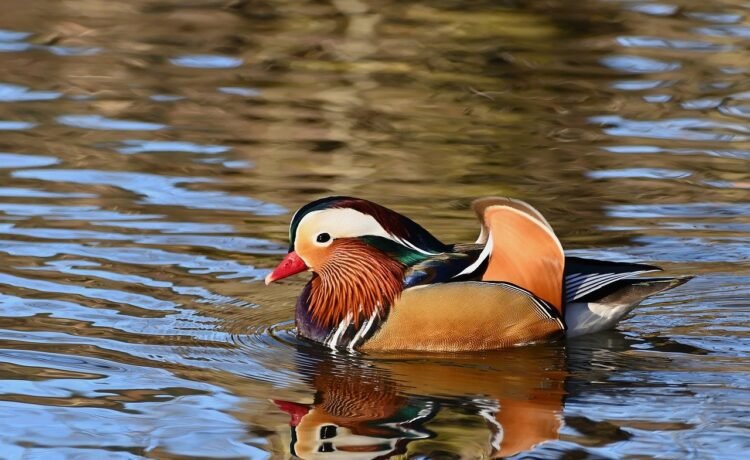Eating Duck Flower, Imagine a delicacy that not only tantalizes your taste buds but also sparks curiosity with its unique appearance and flavors. Enter the world of Eating Duck Flower, an exotic culinary delight that promises a gastronomic adventure like no other.
Eating Duck Flower, also known as “Sesbania grandiflora,” is a flowering plant native to South and Southeast Asia. Its tender leaves, vibrant flowers, and young pods are prized for their distinct taste and nutritional value.
The Origin and History of Eating Duck Flower
Dating back centuries, Eating Duck Flowers has been a staple in Asian cuisine, particularly in countries like Thailand, Vietnam, and India. Its cultivation traces back to ancient agricultural practices, where it was revered for its versatility and medicinal properties.
Culinary Uses and Traditions
Eating Duck Flower in Asian Cuisine
In Asian culinary traditions, Eating Duck Flower is used in a variety of dishes, from soups and stir-fries to salads and curries. Its mild, slightly sweet flavor complements both meat and vegetable-based recipes, adding depth and texture to the dish.
Recipes Incorporating Eating Duck Flower
Some popular dishes featuring Eating Duck Flower include “Canh Chua” (Vietnamese sour soup), “Sambhar” (South Indian lentil stew), and “Pak Sod Sai Kai” (Thai omelet with Eating Duck Flower). These recipes showcase the versatility of Eating Duck Flower in different culinary contexts.
Nutritional Value and Health Benefits
Eating Duck Flower is not only a culinary delight but also a nutritional powerhouse. Rich in vitamins, minerals, and antioxidants, it offers numerous health benefits, including improved digestion, enhanced immunity, and reduced inflammation.
How to Prepare Eating Duck Flower
Cleaning and Preparing Eating Duck Flower
Before cooking, Eating Duck Flower should be thoroughly washed and the tough stems removed. The tender leaves and flowers are then ready to be used in various recipes.
Cooking Methods
Eating Duck Flower can be cooked in a variety of ways, including steaming, stir-frying, and boiling. Its delicate flavor and texture shine through when prepared with minimal seasoning, allowing its natural taste to take center stage.
Where to Find Eating Duck Flower
Fresh Markets
Eating Duck Flower is commonly found in fresh markets across Asia, especially during the rainy season when it’s in abundance. Local vendors often sell it alongside other fresh produce, making it easily accessible to culinary enthusiasts.
Online Sources
For those outside of Asia, Eating Duck Flower can also be sourced online through specialty grocery stores and international food suppliers. This allows people from all over the world to experience its unique flavors and culinary versatility.
Sustainability and Environmental Impact
As interest in Eating Duck Flower grows, concerns about its sustainability and environmental impact arise. Responsible farming practices and conservation efforts are essential to ensure the long-term availability of this prized ingredient while minimizing ecological harm.
Eating Duck Flower in Popular Culture
Beyond its culinary uses, Eating Duck Flower has also made its mark in popular culture, appearing in literature, art, and folklore across Asia. Its vibrant blooms and cultural significance have inspired artists and storytellers for generations.
Exploring Different Varieties of Eating Duck Flower
While Sesbania grandiflora is the most commonly consumed variety of Eating Duck Flower, there are other species with unique characteristics and flavors worth exploring. From the delicate petals of “Sesbania bispinosa” to the robust pods of “Sesbania sesban,” each variety offers its own culinary possibilities.
10. Challenges and Misconceptions
Despite its many virtues, Eating Duck Flower faces challenges such as limited availability outside of its native regions and misconceptions about its taste and preparation. Educating consumers and promoting its culinary versatility can help overcome these hurdles and elevate Eating Duck Flower to the status it deserves.
Conclusion
Eating Duck Flower is not just a culinary ingredient but a symbol of cultural heritage and gastronomic innovation. Its exquisite taste, nutritional value, and culinary versatility make it a treasure worth discovering for food enthusiasts around the world.
Unique FAQs
- Can Duck Flowers be eaten raw?
While Eating Duck Flower can be consumed raw in salads, it is more commonly cooked in various dishes to enhance its flavor and texture.
- Is Eating Duck Flower similar to other edible flowers like nasturtium or borage?
While Eating Duck Flower shares similarities with other edible flowers in terms of appearance, its flavor profile is unique, with a subtle sweetness and delicate texture.
- Are there any side effects of consuming Eating Duck Flower?
When consumed in moderation, Eating Duck Flower is generally safe for most people. However, individuals with certain medical conditions or allergies should exercise caution and consult a healthcare professional before adding it to their diet.
- Can Eating Duck Flower be frozen for later use?
Yes, Eating Duck Flower can be blanched and frozen for future use. This helps preserve its freshness and flavor, allowing you to enjoy it year-round.
- Are there any sustainable farming practices for Eating Duck Flowers? Sustainable farming practices for Eating Duck Flower include crop rotation, organic fertilization, and water conservation techniques. By implementing these methods, farmers can minimize environmental impact and ensure the long-term viability of Eating Duck Flower cultivation.






